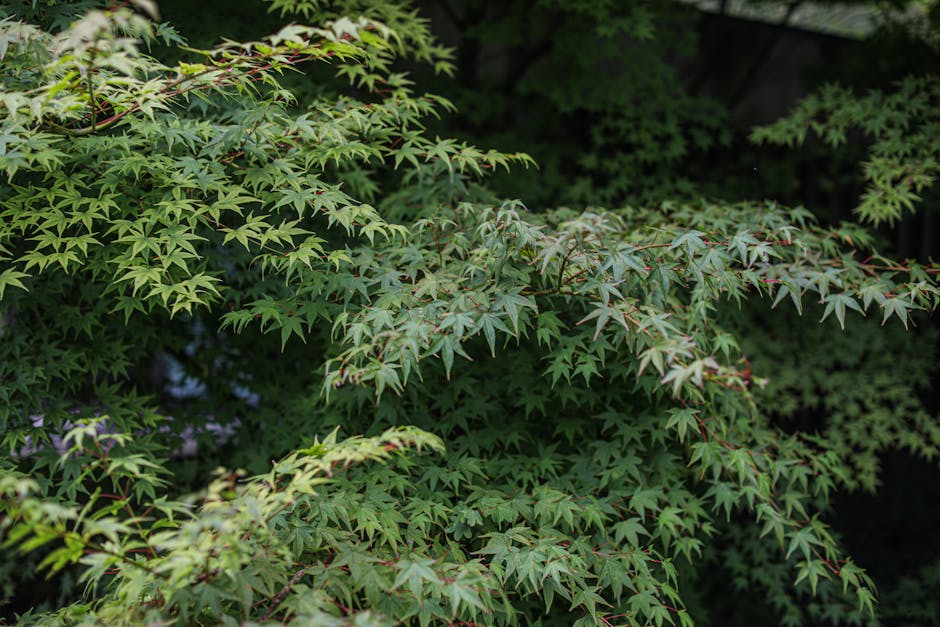How Do I Care for My Acer Palmatum?
Choosing the Right Location
To care for your Acer Palmatum effectively, start by choosing the right location. Find a spot that provides partial shade with protection from strong winds and frost. Acer Palmatums thrive in locations where they receive dappled sunlight, avoiding harsh midday sun.
When selecting the perfect spot for your Acer Palmatum, consider the soil quality as well. Well-draining soil that retains moisture without becoming waterlogged is ideal. The right location sets the foundation for a healthy and flourishing tree.
Creating a microclimate for your Acer Palmatum can make a significant difference in its growth. Shield it from extreme weather conditions by planting it near a fence or taller plants for added protection. A thoughtful location choice can enhance the tree’s resilience.
Watering Needs
Understanding the watering needs of your Acer Palmatum is crucial for its well-being. During the growing season, ensure the soil remains consistently moist. However, avoid overwatering, as it can lead to root rot and other issues.
A good practice is to check the soil moisture regularly. Stick your finger into the soil up to an inch deep to assess if it’s time to water. Adjusting the watering frequency based on the season and weather conditions can help maintain the optimal moisture level.
In periods of drought or intense heat, pay extra attention to watering your Acer Palmatum. A deep watering session to reach the root zone can be more beneficial than frequent shallow watering. Proper hydration contributes to the tree’s overall health.
Mulching around the base of your Acer Palmatum can help retain soil moisture and regulate temperature. A layer of organic mulch like bark chips or compost not only conserves moisture but also adds nutrients to the soil as it decomposes.
Pruning Tips
Pruning is an essential aspect of Acer Palmatum care. Conduct pruning in late winter to early spring when the tree is dormant to remove dead, diseased, or crossing branches. Pruning not only improves the tree’s appearance but also enhances airflow and light penetration.
When pruning your Acer Palmatum, use sharp, clean tools to make precise cuts. Remove any branches that disrupt the tree’s shape or growth pattern. Proper pruning promotes new growth and maintains the tree’s structural integrity.
Regularly inspect your Acer Palmatum for any signs of damage or disease that may require pruning intervention. Prompt removal of problematic branches can prevent the spread of disease and support the tree’s overall vitality.
Remember, less is often more when it comes to pruning your Acer Palmatum. Avoid excessive pruning that can stress the tree. Focus on selective pruning to enhance its natural form and encourage healthy growth.
Fertilizing Advice
Fertilizing your Acer Palmatum is essential for providing the nutrients it needs for robust growth. Apply a balanced fertilizer with equal parts nitrogen, phosphorus, and potassium in early spring before the tree starts actively growing.
Consider using a slow-release fertilizer to ensure a steady nutrient supply throughout the growing season. Over-fertilizing can harm your Acer Palmatum, so follow the recommended dosage on the fertilizer package.
Avoid fertilizing in late summer or early fall, as this can stimulate late growth that may not harden off before winter, making the tree more susceptible to cold damage. Proper fertilization supports vibrant foliage and overall tree health.
Monitor your Acer Palmatum’s growth response to the fertilizer and adjust your fertilization schedule accordingly. A well-fertilized tree will showcase vigorous growth, lush foliage, and vibrant colors, enhancing its ornamental value in your garden.
Wrapping Up
Now you have all the essential tips to care for your Acer Palmatum and ensure it thrives in your garden. By following these simple steps, you can enjoy the beauty of this stunning tree for years to come.

